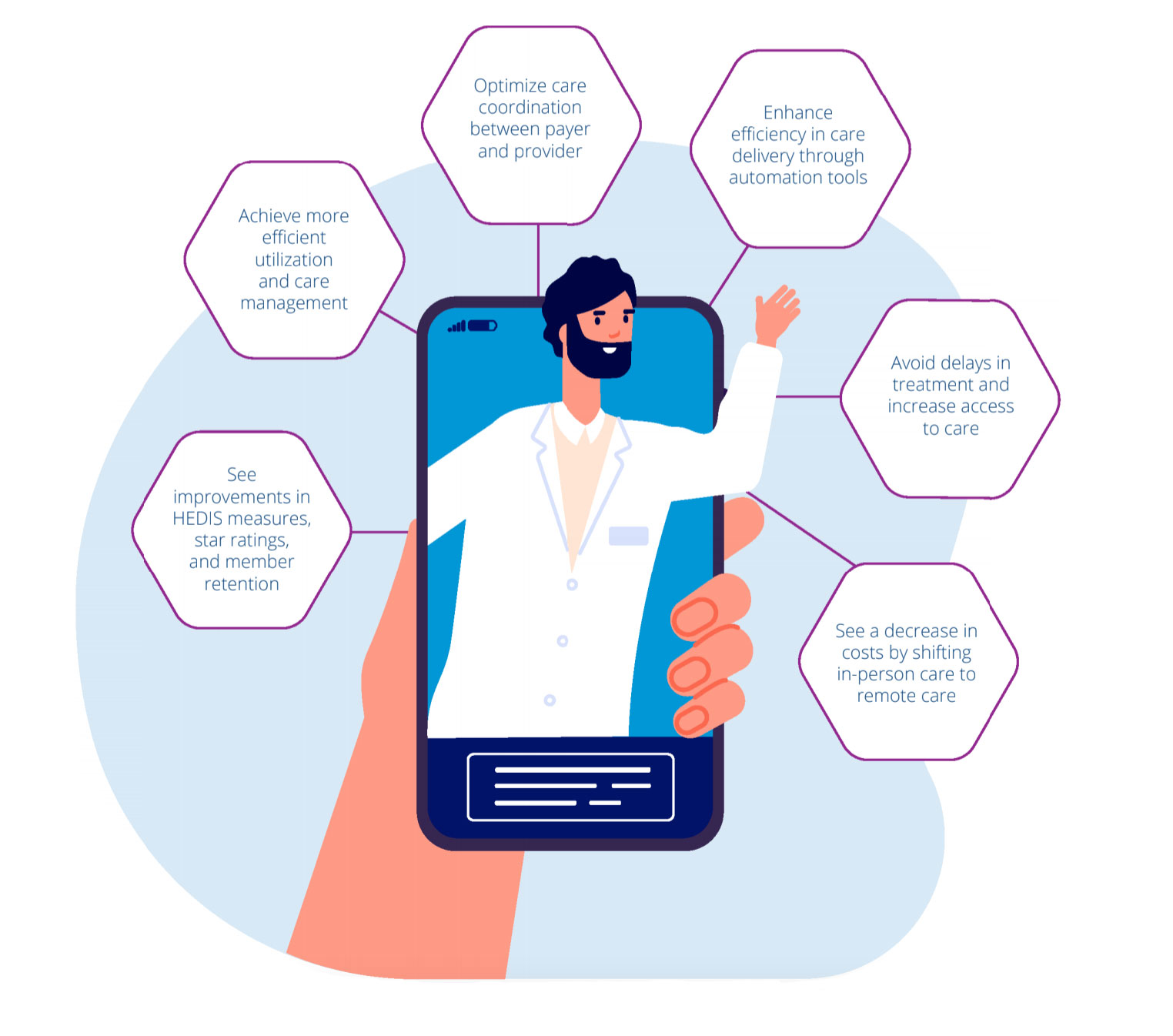In recent years, remote care has emerged as a powerful tool in healthcare, allowing providers to deliver care to patients outside of traditional clinical settings. Payers, including insurance companies and healthcare organizations, have a crucial role to play in leveraging remote care to improve population health. By implementing effective strategies and collaborating with providers and patients, payers can enhance access to care, improve patient outcomes, and reduce healthcare costs. In this blog post, we will explore five key ways payers can utilize remote care to improve population health.
View this 2-minute video clip from a recent webinar of HRS' Vice President of Value Based Care Strategy Sudeep Pisipaty explaining the opportunities for payers to utilize remote care or keep scrolling for a quick overview.
1. Offer Flexible Reimbursement Policies
Payers can facilitate the adoption of remote care by offering flexible reimbursement policies. By ensuring that healthcare providers can bill for remote care services effectively, payers incentivize the use of these technologies. This may include reimbursing remote care visits at the same rate as in-person visits and expanding coverage to include additional remote care services. In a value-based care environment, this flexibility provides an incredible opportunity to augment existing care delivery strategies and improve patient outcomes.
2. Promote the Use of Remote Care Technologies
To encourage the adoption of remote care technologies, payers can collaborate with technology vendors to provide discounted services to providers. By offering financial incentives, payers motivate providers to incorporate remote care technologies into their practice. This collaboration can help overcome barriers to entry and drive the widespread use of remote care technologies, benefiting both providers and patients.

6 Reasons Telehealth Makes Sense for Payers
As healthcare shifts towards value-based care, payers need to adapt to meet their member's needs. RPM and telehealth are tools that are beneficial for payers as they help proactively manage their members across the care continuum and acuity spectrum. Explore the six reasons why telehealth makes sense for payers.
3. Provide Education and Training
Payers can play a vital role in ensuring the effective utilization of remote care technologies by providing education and training to providers. By equipping them with the necessary skills and knowledge, payers empower providers to leverage these technologies to their fullest potential. This includes educating providers on effective communication with patients remotely, secure management of patient data, and optimizing the use of remote care technologies. Furthermore, payers should also educate their own staff, including care management and utilization management teams, to maximize the value and benefits of remote care programs.
4. Monitor the Quality of Remote Care Services
Monitoring the quality of remote care services is essential to ensure that patients receive high-quality care. Payers can implement performance metrics, track patient outcomes, and conduct regular audits to assess the effectiveness of remote care programs. By measuring success and defining accountability, payers can identify areas for improvement and make necessary adjustments to enhance the overall quality of care delivered through remote care technologies.
5. Collaborate with Providers and Patients
Effective collaboration between payers, providers, and patients is crucial for the successful implementation of remote care programs. Payers should work closely with providers to understand their needs, address any challenges, and ensure that remote care services align with their practice models. Additionally, payers should actively seek feedback from patients, leveraging technology platforms, to understand their experiences and incorporate their valuable insights into program design and improvement efforts. Collaborative efforts ensure that remote care services are not only implemented successfully but also meet the unique needs of patients.
How Payers Can Get Involved in Remote Care
Remote care has the potential to revolutionize healthcare delivery and improve population health outcomes. Payers play a vital role in facilitating the adoption and effective utilization of remote care technologies. By offering flexible reimbursement policies, promoting the use of remote care technologies, providing education and training, monitoring the quality of services, and collaborating with providers and patients, payers can leverage remote care to enhance access to care, improve patient outcomes, and ultimately improve population health. Embracing these strategies, payers can contribute to a healthcare landscape that is more patient-centric, efficient, and effective.

Speak to a Specialist
Connect with an HRS digital health specialist today to learn more about opportunities for payers to get involved in remote care.